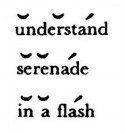Definition, Types, and Examples of Poetic foot:
The basic unit of rhythmic measurement in a line of POETRY. In traditional English VERSE, a foot consists most often of at least one accented (stressed) syllable and one or more unaccented (unstressed) syllables. The number and type of feet in a line of a poem determine its METER.
The five most commonly used feet are illustrated below. Accented syllables are indicated by the mark (¯); unaccented syllables by (˘).
The iambus (iambic foot)
The iambic foot consists of one unaccented syllable followed by one accented syllable:
 |
| Iambus or Iambic foot - definition, types and examples of Poetic foot - Literary terms |
The trochee (trochaic foot)
The trochaic foot consists of one accented syllable followed by one unaccented syllable:
 |
| trochee or trochaic foot - definition, types and examples of Poetic foot - Literary terms |
The anapestic foot consists of two unaccented syllables followed by one accented syllable:
 |
| anapest or anapestic foot - Definition, types and examples of Poetic foot - Literary terms |
The dactyl (dactylic foot) consists of one accented syllable followed by two unaccented syllables:
 |
| dactyl or dactylic foot - definition, types and examples of Poetic foot - Literary terms |
The spondee (spondaic foot)
The Spondaic foot consists of two accented syllables:
 |
| spondee or spondaic foot - definition, types and examples of Poetic foot - Literary terms |
Because the iambus (or iamb) and the anapest move toward stress, they are called rising meters. The trochee and the dactyl, which move away from stress, are called falling meters.
Of the five kinds of feet illustrated here, the iambus is by far the most often used in English verse; the spondee is the rarest. Other feet (such as the amphibrach, amphimacer, antibacchius, bacchius, and dibrach) appear so infrequently that they have not been considered.
See more:
METER,
RHYTHM,
SCANSION.









No comments:
Post a Comment